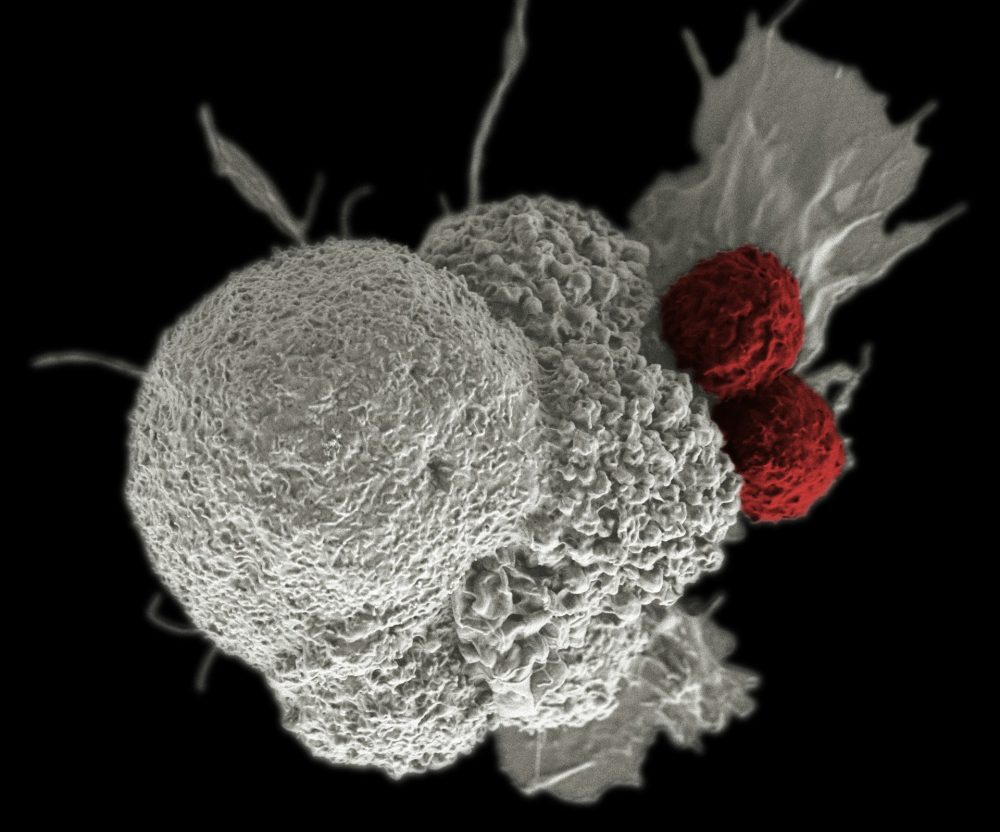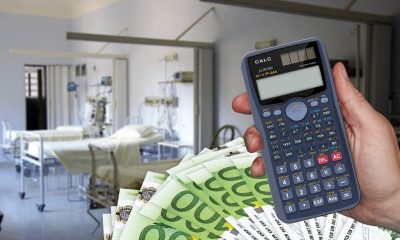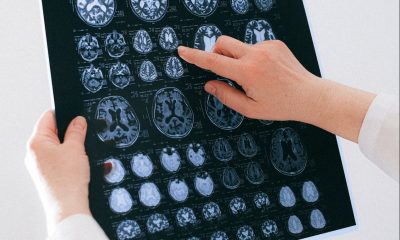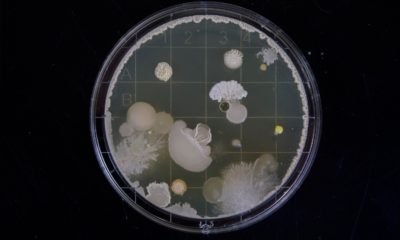Biotech
Bioxytran’s tissue oxygenation therapy breaking the stroke paradigm
BXT-25 is capable of perfusing clots in brain and heart. FDA approval process is based on easily defined surrogate markers. There’s an enormous licensing potential of platform technology.

Bioxytran Inc. (BIXT) has a novel drug for stroke patients that can restore the supply of oxygen to the brain. Strokes effects over 900,000 people per year and the indirect costs of stroke due to disability and special services are over $22 billion annually. With all the medical breakthroughs in technology, the standard of care in stroke has remained relatively unchanged for the past 10 years. Since no treatment exists to get oxygen to the affected parts of the brain, the emphasis had been on awareness and quickly routing patients to stroke treatment centers.
It is estimated that patients spend 2.5 hours from the onset of stroke until they can get Tissue Plasminogen activator (tPA) treatment to remove the blockage and restore the oxygen supply to the brain. BXT-25 the companies lead drug candidate serves as an oxygen bridge for the stroke victim until they can get treatment. This company is addressing a huge unmet medical need that could virtually eliminate all the restorative care and rehabilitation needed after a stroke. Investors need to ask what a drug like BX-25 is worth.
Hospital trip could age brain close to a decade
When the supply of blood or oxygen is cut off to the brain for a period of time brain cells die. Studies have shown that an ischemic stroke consumes almost two million neurons every minute until blood flow is restored. This translates into 14 billion synapses lost and 7.5 miles of myelinated fibers lost every minute and accelerated aging of the brain by 3.1 weeks. In a typical stroke scenario, 30 minutes are spent getting to the hospital which results in a brain aging of 1.8 years and then the additional two hours to get imaging results in another 7.2 years of aging. This brings the total aging of the brain to nine years in the average stroke case. The indirect cost of stroke care in terms of lost productivity and caretaking is estimated at $22.0 billion annually. According to the Journal of the American Medical Association (JAMA) abstract “Oxygen supplementation could prevent hypoxia and secondary neurological deterioration and thus has the potential to improve recovery.”
Elegant drug design
Most believe that a blood clot is an impermeable barrier but it is actually quite porous. The clots that form in the brain don’t happen overnight either. They are a result of atherosclerosis, which is a build-up of fats and cholesterol on the artery walls. That constriction of the artery can allow the blood cells to bunch up. When they do this they start producing fibrins which form netlike structures that end up trapping more blood cells.
Fibrinogen is normally dissolved in blood plasma and through a cascade of interactions generates thrombin which converts the fibrinogen in the blood plasma into long strands of fibrin that radiate from the clumped cells designed to trap more blood cells. Instead of breaking up the clot the simpler solution is to try to get an oxygen delivery vehicle that is small enough to pass through the clot. Clots are really big fishnets in the arteries so anything tiny will pass right through them. BXT-25 is a small drug molecule that is 1/5000th the size of a blood cell and has the ability to easily pass through the clot like the blood plasma.
The molecule
BXT-25 is a hemoglobin-based polymer that is simply a combination of Heme derived from hemoglobin and a copolymer designed to stabilize it in the blood system. Heme had been used for years commercially as a meat flavoring including in the Impossible Burger’s meatless patties. Heme if injected in the bloodstream would be filtered out by the liver. The genius behind the inventor and CEO of the company, David Platt, was to stabilize the molecule and trick the body into keeping it around.
When new blood is created in the bone marrow it has a surface sugar signature that is recognized by the liver. As the blood cell ages, the sugar breaks down to the point where the liver decommissions the cell and filters it out. BXT-25 is a comprised of molecules of Heme which are the oxygen carries of human blood cells bonded to a copolymer stabilizer that mimics the sugars found on blood cells. The big difference between BXT-25 and blood is that BXT-25 is 5000 times smaller and can pass right through a clot and go many places blood cannot go.
Approval process
The company plans to submit an Investigational New Drug Application (IND) to the Food and Drug Administration (FDA) after completing their master drug file. Preclinical results have shown that the drug is safe and non-toxic. The key to approval rests in Bioxytran’s exclusive license to use the MDX Viewer to measure tissue oxygenation. It’s anticipated that tissue oxygenation levels using the Tissue Metabolic Score (TMS) will be measured before the injection and then after. It takes 3 minutes for BXT-25 to take effect.
The TMS is a real-time vital sign of tissue health. By proving that tissue oxygenation increased, the drug can be approved on that basis alone without making any claim regarding the benefit to stroke patients. That can come in time. When making efficacy claims about benefits to the stroke patients it’s difficult to quantify which treatment the BXT-25 or the tPA ultimately accounted for the benefit. A large costly trial with multiple arms that uses a subjective impairment study would be the only path forward without the FDA approved MDX Viewer.
Future uses
Stoke is an enormous market, but the low hanging fruit for Bioxtran is Acute Respiratory Distress Syndrome (ARDS). ARDS represents a $23.4 billion dollar market. When patients are in an Intensive Care Unit (ICU), many develop a condition called ARDS. Essentially, the fluid that leaks into the lungs and eventually causes a mucous-like substance to form on and in the air sacs of the lungs known as the alveoli. This makes breathing difficult or impossible because what is happening is that the blood cannot get close enough to the surface of the alveoli to pick up the oxygen.
A small molecule like BXT-25 can go through a much smaller capillary and get closer to the surface to pick up the oxygen. When the lungs lose their efficiency as in the case of ARDS the body doesn’t get enough oxygen and eventually this leads to organ shutdown. The MDX Viewer which measures the tissue oxygenation vital sign TMS can predict organ shutdown. BXT-25 can provide that lifeline of oxygen to the organs allowing the body time to recover.
Licensing potential
The company recently brought on Juan Carlos Lopez-Talavera who has licensing experience with big pharma specifically Bristol-Myers Squibb (BMY) and with the device maker Medtronic. The company has one key licensing agreement with MDX life sciences. This license gives them exclusive developmental use for the protocols to measure the TMS.
What is so significant about this license is that tissue oxygenation and the TMS vital sign have been shown to improve patient outcomes in emergency medicine. This gives Bioxtran the ability to negotiate a licensing deal with medical device makers to start the manufacturing of the next generation MDX Viewer which needed in almost all Operating Rooms in hospitals throughout the nation.
Investment summary
Bioxtyran is a platform technology that could ultimately control the tissue oxygenation market. The stroke management market size is estimated to be $36.7 billion by 2023. Every cell in our body requires oxygen and that is an inescapable fact. Hyperbaric chambers attempt to saturate the blood plasma with more oxygen so that the plasma can travel toward hard to reach tissues that are hypoxic. BXT-25 is designed to carry oxygen to these hard to reach areas and has not had any ill side effects in preclinical trials. With such a simple molecule the correlation between human and animal studies should be close to 99%. The real question and risk in this investment is what the FDA will require for approval.
It seems clear that Bioxytran is going after the quickest pathway to approval and that means a safety study for a large group of healthy volunteers. There is no FDA approved biomarker for stroke but JAMA has made it clear that improving tissue oxygenation improves medical outcomes in stroke. The MDX viewer seems perfectly positioned to be considered as a surrogate endpoint in stroke. If the FDA accepts the TMS as a surrogate marker, the company should be close to $1.0 billion market capitalization or $8.50/share by year end.
If they don’t accept the surrogate endpoint in stroke there are many more indications that the company can go after that are equally as lucrative. If they secure favorable terms the stock with such a thin float could soar or fall on dilutive financing. Given the small float, the optimal strategy for investors might be to purchase a small amount of stock and participate in the S-1.
(Featured image by DepositPhotos)
—
DISCLAIMER: This article expresses my own ideas and opinions. Any information I have shared are from sources that I believe to be reliable and accurate. I did not receive any financial compensation for writing this post, nor do I own any shares in any company I’ve mentioned. I encourage any reader to do their own diligent research first before making any investment decisions.

-

 Fintech2 weeks ago
Fintech2 weeks agoItaly Issues First Natively Tokenized Minibond on Public Blockchain
-

 Fintech1 week ago
Fintech1 week agoN26 Hires UBS Executive to Lead Turnaround Amid Regulatory Pressure
-

 Biotech5 days ago
Biotech5 days agoCAR-T Therapies: From Breakthrough Cancer Treatment to Faster, Safer, and More Accessible Immunotherapy
-

 Cannabis2 weeks ago
Cannabis2 weeks agoLuxembourg’s Cannabis Paradox: Legal at Home, Restricted Everywhere Else

























